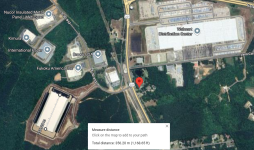Hi Monkeymandan, We already have a decent amount out of the ground, and the US expansion could certainly be up and running before our refinery in Luleå is built and commissioned. There’s only so much the EVA Plant can process for trials and early supply for the Nyobolt deal, and Mark no doubt sees this US expansion as an opportunity to use what we have. Talnode-R is a new product that has only just officially launched. It’s gone through pilot-scale production but hasn’t yet undergone the multi-year trials and validation that Talnode-C has. By incorporating Talnode-C production into the same US refinery, Mark is de-risking operations and opening the door for larger, commercial-scale grants and financing of the US expansion to happen sooner. According to Mark, we are able to do this because the process is very similar: “We started testing, can we use graphite concentrates from that process and feed it into our purification process, which we developed for the Vittangi graphite, which is quite unique, and in the challenges we’ve solved there over the years, we’ve found that with a few tweaks, we can use the same system and that it goes into the same shaping and coating system…” “The back end of it looks very close to a copy of what our current anode process is, so therefore you can have modular lines added for extra capacity somewhere like Vittangi, or of course, you could build a similar plant in America, Japan, Australia, Middle East, India, UK etc... It essentially takes all of the technology we’ve already invested in that downstream part, and means it can spread around the world as a separate industrial technology. You can be an anode producer in other places.” Talga’s model for financing all of this will rely heavily on grants, which would be much slower and more difficult to secure (for commercial-scale) if it were just for Talnode-R alone: “Our model is to find the partners and the funding both from Government, State, local and the actual customers themselves and basically take this as a package to different parts of the world and explore those opportunities.” As to whether importing from our Vittangi deposit will be a permanent solution remains to be seen, especially once the Luleå refinery is fully operational and at full capacity. Stage 2 expansion, streamlined under the CRMA, should fix any lack of feedstock. Mark has also stated that there is potential to source from other natural feedstocks too, but for now, the benefit of sourcing from Vittangi is that the multi-year verification work has already been completed. Lastly, graphite is on NATO’s critical minerals list, which directly supports this type of expansion from Talga, as it’s recognised as a material critical to defence.

